Brendan Jon Philip – 29 May, 2017
There is an archaeological current running through Armstrong's practice that comes to the fore in this exhibition. As in her ongoing Trading Table project - for part of which this residency was initially intended - she attempts to breathe new life into otherwise discarded and overlooked objects, making visible an occluded material culture of our commodified world.
The outcome of a summer residency with the Visiting Artist program hosted by the Dunedin Public Art Gallery in conjunction with the Dunedin School of Art, Eve Armstrong’s exhibition Growing Demand has the artist developing from familiar territory in a specific response to place. Presented in two parts - on DPAG’s ‘big wall’ overlooking the foyer and in the adjoining Sargood Gallery - the show addresses the buildings former incarnation as the DIC department store and Dunedin’s robust culture of second hand traders. Fetishising commodities abandoned to time and the persistent liminality beneath the apparent permanence of our built environment, Armstrong collages her found materials into a coherent body of work that reiterates the aesthetics and ideals of her established practice.
Looming above the foyer, Armstrong occupies the seven metre high ‘big wall’ with five large collage pieces making up the single work China and Hardware. Enlarged photographs of various domestic knick-knacks; earthenware jugs, a pair of salt and pepper shakers are placed on rolls of wallpaper roughly painted in dusty shades of peach. The whole effect is obviously evocative of an advertising display with these commodity-objects somehow cast adrift in time, their muted surfaces unreasonably flattened into the picture plane.
Although towering in scale the objects in the images of China and Hardware are isolated from each other with swathes of space between them. The same sense of space is found between the objects in the sculptural component of Growing Demand where the theme of ephemera recast as art-signifier for commodity continues. Only slightly brightening the pastel palette carried over from the big wall, off cut ends of fabric are presented on metal frames. Standing lamps mounted in concrete made from the same steel tubing and an assortment of small found objects individuated on their plinths of the same rough concrete are distributed through the space. These sparsely populated sculptural elements echo the department store with a stark, slightly wonky, arte povera sales floor. In this sense the display comes across a wooden pastiche, like an apocalyptic reimagining of what life was like before the bombs fell; and lacking too many constituent elements to make a fully convincing tableau. As an artist’s investigation into particular evanescent faces of a city the work is effective yet somewhat understated in its muted presentation and distanced treatment of subject.
A recurrent motif throughout the show is handmade metal display hooks from one of Dunedin’s second-hand traders - lengths of wire bent around at both ends. A collection of these hooks feature in a photograph, as parts of the sculptures and turning up in the images of China and Hardware. The fascination with these strictly utilitarian objects points to the artist’s bent for the easily discarded infrastructure of the world of things around us. She wants to draw our attention to these things that have slipped past the threshold of use value, and in their contemplation find a new significance.
There is an archaeological current running through Armstrong’s practice that comes to the fore in this exhibition. As in her ongoing Trading Table project - for part of which this residency was initially intended - she attempts to breathe new life into otherwise discarded and overlooked objects, making visible an occluded material culture of our commodified world. Armstrong sifts through the rubble - quite literally in this case - to draw loose lines of narrative around items that are no longer primary commodities.
In this attempt at evoking a department store floor, the art gallery is reflexively remade as a false museum of itself - with artefacts not from the site, but at least suggestive of the site. This layer of suggestion perhaps speaks to a city that makes a theme park of its own history.
Brendan Jon Philip
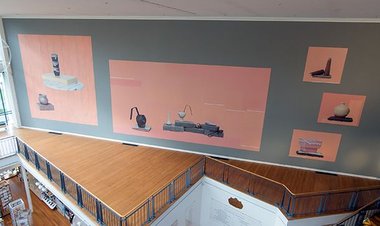

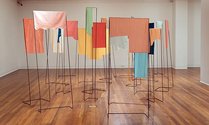

 Advertising in this column
Advertising in this column Two Rooms presents a program of residencies and projects
Two Rooms presents a program of residencies and projects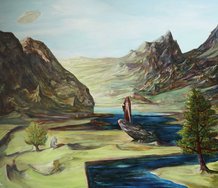
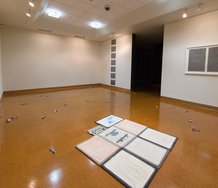
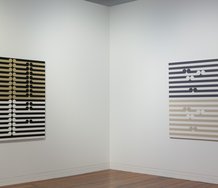
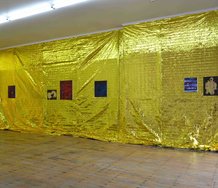
This Discussion has 0 comments.
Comment
Participate
Register to Participate.
Sign in
Sign in to an existing account.